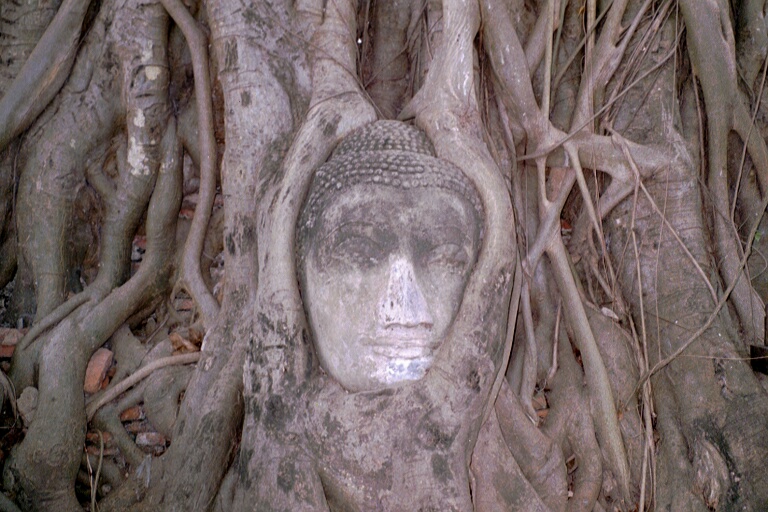12th June 2018
Abstract
Thailand
Thailand’s economy and gas demand are growing, and around 50% of its gas requirement comes from the Thai-Malaysia Joint Development Area (MTJDA) and Myanmar. The main petroleum producing province, the Gulf of Thailand is mainly shallow water. Approximately 2800 wells, 160 production platforms, 22 producing gas fields and 24 producing oil fields occur in the area with the first well drilled in 1968 and first field (Erawan) discovered in 1973.
The Pattani, northern Malay, Chumphon and Songkhla Basins are considered the primary areas for future success. The northern Pattani Basin has oil and gas potential whilst the western basins may produce further small oil fields. The overlapping-claims area (OCA) between Thailand and Cambodia where activities are currently suspended under force majeure contains part of the Pattani Basin and may represent some of the most prospective undrilled acreage in SE Asia.
These Cenozoic basins mainly comprise en-echelon half-grabens with a significant dextral strike-slip fault displacement. Basement fabric has strongly influenced the north-south orientation of these rifts and the location of the broadly NW-SE trending transfer zones which segment the rifts. Many of these basins are located on or near an old suture which separates the Shan Thai Block (aka Sibumasu Block) in the west from the Indochina Block in the East. Many formed as narrow, rapidly subsiding, rift, half-grabens with a fault-controlled lacustrine fill. Following the cessation of rifting, cooling and flexural subsidence led to the creation of broader, larger, depressions which were then filled mainly by alluvial sediments. In the Pattani and Malay Basins, the post-rift sequence is dominated by paralic sediments with occasional marine incursions.
The Mergui Basin in the Andaman Sea is gas prone and future discoveries, in deep-water and a long way from shore and potential markets, would have to be multiple Tcf to justify economic development. Two small sub-commercial gas discoveries have been made to date.

Myanmar
Offshore Myanmar is subdivided into three areas: the Rakhine, Moattama and Tanintharyi. Myanmar has fewer discovered fields (one gas condensate and 7 gas) and fewer exploration wells (approx. 170) than neighbouring Thailand. Much of Myanmar’s offshore gas is exported via pipeline overland to China and Thailand, with a growing need need to retain production for domestic consumption.
Exploration started in 1969. Unlike Thailand, significant breaks in exploration activity caused by economic sanctions and lack of access to technology have led to both limited stratigraphic penetration and deep-water exploration. Four gas fields are currently producing offshore Myanmar (Zawtika, Shwe/Shwe Phyu/Mya, Yadana and Yetagun) each occurring in four different geological settings.
The Ayeyarwady delta drains southwards into the Martaban Basin whilst the Brahmaputra delta covers much of the Rakhine Basin. Both deltas are virtually unexplored beyond the 200m isobaths. Biogenic gas is the dominant phase as evidenced by the Shwe and Zawtika fields and the recent Shwe Yee Htun-1 and Thalnwin-1 discoveries.
The Rakhine deep-water area is mostly unstructured and is filled with sediments input from the Brahmaphutra river and the uplifted Indo-Burman Ranges. Biogenic gas is produced from Early Pliocene deep marine sandstones in the Shwe, Shwe Phyu and Mya fields and has also recently been discovered in Thalin-1, Shwe Yee Htun-1 and Pyi Thar-1. Small trap sizes due to recent structuring and significant inversion are a risk on the shelf whilst in deep-water, in potential stratigraphic traps, reservoir is the key risk.
In the Moattama region the main depocentre is the Martaban Basin where biogenic gas charges shallow Pliocene and lower Pleistocene sandstones in the Zawtika Field and its nearby satellites where the delta sequence is thickest. Thermogenic gas charges Lower Miocene shallow marine carbonates in the Yadana Field to the west on the volcanic high at the edge of the Martaban Basin. Reservoir presence/quality is a risk in the central and southern parts of the main Martaban Basin whilst excessive sand presence may represent a seal risk in the north. In the western Moattama source charge is a risk for structures located too far from the main mature Martaban Basin source kitchen area to the east.
The Tanintharyi region comprises an inboard Late Oligocene rift system overlain by Miocene-Recent clastic sediments. The Yetagun Field is located on the shelf and produces thermogenic gas and condensate from Lower Miocene shallow marine sandstones. The shallow water Tanintharyi shows little evidence of a working source rock south of Yetagun. The most likely exploration targets are deep marine fans in the western Tanintharyi where reservoir presence /effectiveness will be a key risk due to the distal nature of the sediments.
The large amount of 3D seismic recently acquired (especially in the deep water) coupled with the drilling of recent deep-water exploration wells is set to bring about a step-change in our knowledge and geological understanding of Myanmar.
Video
Please make sure that you are logged in, in order to view this content.
[memb_include_partial id=12463]
Venue Information
Venue information
Venue name:
The Geological Society, London
Venue phone:
+44 (0)20 7434 9944

